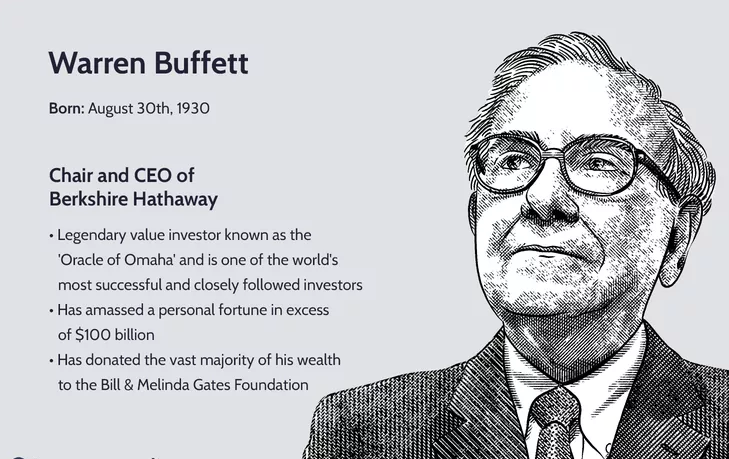
What Is the 90/10 Strategy?
Legendary investor Warren Buffett invented the “90/10" investing strategy for the investment of retirement savings. The method involves deploying 90% of one's investment capital into stock-based index funds while allocating the remaining 10% of money toward lower-risk investments.1
This system aims to generate higher yields in the overall portfolio over the long-term. Following this method, Buffett professes the potential gains an individual investor could achieve will be superior compared to those investors who employ high-fee investment managers. However, much depends on the quality of the index funds the investor purchases.1
KEY TAKEAWAYS
- The 90/10 investing strategy for retirement savings involves allocating 90% of one's investment capital in low-cost S&P 500 index funds and the remaining 10% in short-term government bonds.
- In a letter to Berkshire Hathaway shareholders, Warren Buffett outlines his plans to follow the 90/10 rule regarding his wife's inheritance, which will be invested 90% in an S&P 500 index fund and 10% in government bonds.1
- The 90/10 investing rule is a suggested benchmark that investors can easily modify to reflect their tolerance to investment risk.

How the 90/10 Strategy Works
A typical application of the 90/10 strategy involves the use of short-term Treasury Bills (T-Bills) for the 10%, fixed-income component of the portfolio. Investment of the remaining 90% is in higher-risk (but low-cost) index funds.
For example, an investor with a $100,000 portfolio electing to employ a 90/10 strategy might invest $90,000 in an S&P 500 index fund. The remaining $10,000 might go toward one-year Treasury Bills, which in our hypothetical scenario yield 4% per annum.
Of course, the “90/10” rule is merely a suggested benchmark, which may be easily modified to reflect a given investor’s tolerance to investment risk. Investors with lower risk tolerance levels can adjust lower equity portions to the equation.
For instance, an investor who sits at the lower end of the risk spectrum may adopt a 40/60 or even 30/70 split model. The only requirement is that the investor earmarks the more substantial portion of the portfolio funds for safer investments, such as shorter-term bonds that have an A- or better rating
Calculating 90/10 Strategy Annual Returns
To calculate the returns on such a portfolio, the investor must multiply the allocation by the return and then add those results. Using the example above, if the S&P 500 returns 10% at the end of one year, the calculation is (0.90 x 10% + 0.10 x 4%) resulting in a 9.4% return.
However, if the S&P 500 declines by 10%, the overall return on the portfolio after one year would be -8.6% using the calculation (0.90 x -10% + 0.10 x 4%).
Real-World Example of 90/10 Strategy
Buffett not only advocates for the 90/10 plan in theory, but he actively puts this principle into practice as reported in Berkshire Hathaway's 2013 letter to shareholders. Most notably, Buffett uses the principle as a trust and estate planning directive for his wife, as laid out in his will:
My money, I should add, is where my mouth is: What I advise here is essentially identical to certain instructions I’ve laid in my will. One bequest provides that cash will be delivered to a trustee for my wife’s benefit. (I have to use cash for individual bequests, because all of my Berkshire shares will be fully distributed to certain philanthropic organizations over the ten years following the closing of my estate.) My advice to the trustee could not be more simple: Put 10% of the cash in short-term government bonds and 90% in a very low-cost S&P 500 index fund. (I suggest Vanguard’s.) I believe the trust’s long-term results from this policy will be superior to those attained by most investors—whether pension funds, institutions, or individuals—who employ high-fee managers.1
Special Considerations
There are variations of Buffett's 90/10 investing strategy that take into consideration the investor's age and risk tolerance. As an investor nears retirement, it's frequently a good idea to rebalance a portfolio to reflect a more conservative approach toward investing. The investor's need to protect their nest egg so they have funds to live on during retirement becomes paramount over the need for continuous growth. For this reason, the percentages in the investment strategy might change considerably.
One approach has the investor switching the allocations so that 90% of funds are put in low-risk government bonds and 10% are invested in index funds. Additionally, investors who are bearish may opt for these allocation amounts as part of a crash protection strategy.
Other approaches change the percentages for each investment type depending on the investor's risk tolerance combined with other factors, such as their desire to leave an estate to their heirs or the availability of other assets they can draw upon during retirement.
What is the difference between a Trading robot and a trading strategy?
In fact, nothing, this is the same trading strategy only written in code. The robot is devoid of emotions and prejudices, so it will definitely follow the strategy. The second advantage is that you can run the strategy on history and see exactly whether it works or not and what kind of income it brings and what risks. If you want to get your own trading strategy, get one of our strategies already written in the form of a robot. Our trading strategies embodied in the form of robots:
EA Long Term MT4 https://www.mql5.com/en/market/product/92865EA Long Term Mt5 https://www.mql5.com/en/market/product/92877
Scalper ICE CUBE MT4 - https://www.mql5.com/en/market/product/77108
Scalper ICE CUBE MT5 - https://www.mql5.com/en/market/product/77697
Scalper Lego - https://www.mql5.com/en/market/product/90776
Scalper Golden Gate - https://www.mql5.com/en/market/product/87986
EA Impuls Pro MT4- https://www.mql5.com/en/market/product/72402
EA Impuls Pro MT5 - https://www.mql5.com/en/market/product/72335
EA Pump and Dump MT4 - https://www.mql5.com/en/market/product/73165
EA Pump and Dump MT5 - https://www.mql5.com/en/market/product/72403?


